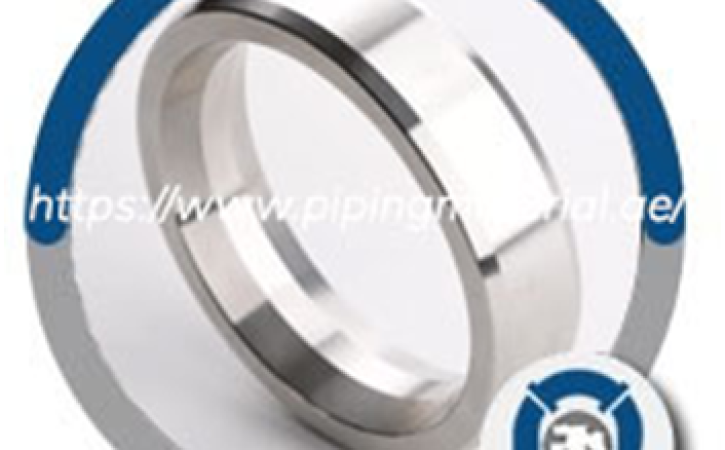
Why is a Hastelloy gasket used?
Hastelloy gasket is a type of high-temperature alloy used in applications that will be subjected to extreme heat and pressure. It’s often used in gas turbines, boilers, and other industrial equipment subjected to high temperatures.
Hastelloy gaskets provide exceptional stress corrosion cracking resistance, resistance to localized attack, and excellent resistance to substantially reducing and mildly oxidizing corrosive acids.
The most common application for Hastelloy is in the production of steam. The metal is used to construct steam pipes and other steam boiler or turbine system
components.
This alloy protects the internal parts of a device that could be damaged by water or other liquids. These gaskets are made of nickel and chromium, both corrosion-resistant metals. They are also highly elastic, meaning they can withstand pressure without rupturing.
The
se are the primary benefits of utilizing such an alloy:
-It has a high level of heat and corrosion resistance. Thus it will not break down even under high temperatures.
-It does not quickly expand or contract in response to temperature variations since it has a poor expansion coefficient. Thus it can withstand pressure for long periods without getting damaged.
Hastelloy gasket
Isa Hastelloy spiral wound gasket stronger than titanium?
Hastelloy gasket is a type of stainless steel used for decades. It is a very versatile material and can be used in many applications. Its durability and resistance to high temperatures make it a popular material in the aircraft sector. It can also be found in medical equipment and other products such as vacuum pumps and heat exchangers.
The strength of such alloys comes from their unique composition. The material contains nickel, chromium, molybdenum, titanium, and tungsten carbide. These elements make the gasket more resistant to wear than other gaskets today.
These alloys are also more complex than titanium due to their composition; they are denser than titanium but less dense than steel or aluminum gaskets. This makes them stronger than other materials today, such as stainless steel or aluminum alloys like Inconel or Hastelloy B2X alloyed with carbon (carbon stainless steel).
How many types of nickel gaskets are there?
There are a lot of different types of nickel gaskets.
The first type is the Teflon-coated gasket. This type is made with Teflon, which makes it very slippery and non-sticky. It also has a lubricating agent that makes it easier to install.
Another type of gasket is a plain-old rubber gasket (sometimes referred to as RTV). This type of gasket can be used in place of a regular rubber sealant on any surface with which it comes into contact. It’s not as strong as other types of rubber, so it may not work well in cases where you need to support heavy objects or maintain tremendous pressure over long periods (like when you’re trying to keep water out). However, if you need something flexible and easy to install, this may be just what you’re looking for!
The last type is called an ultrasonic nickel sealer. These little pieces of plastic have been treated using ultrasonic technology, so they’ll stick like glue onto any surface they come into contact with! They’re super easy to install—apply them on your walls or floors like any other piece.
What is the most commonly used material for nickel graphite gasket?
Nickel-graphite silicones are one of the materials we employ the most frequently. This material is frequently used for several purposes, including an economic substance. Contains the same benefits as nickel and silicone rubber.
Nickel-graphite is a material that has many uses in the manufacturing industry. It is used in water purification, gas and oil production, and as a chemical catalyst. The most common application of this type of gasket is in the oil field, which is used to seal pipes between two wells.
The most common material for nickel graphite gaskets is rubber. Rubber is a flexible material that offers a good cushioning effect between two surfaces. It is resistant to extreme heat and has a low coefficient of friction.
How do I avoid paying GST on importing nickel alloy gaskets in Qatar?
If you’re importing nickel gaskets in Qatar, there are a few things that you can do to make sure you don’t have to pay GST. First, make sure that your product is not “dual-use.” If it’s not, you won’t have to pay GST. Second, make sure that your product is not “dutiable.” If it is, then you’ll have to pay GST on it. Third, ensure that the product’s value is below 50% of all imports or exports from Qatar.
You won’t be required to pay GST in Qatar on your imported nickel alloy gasket in an emergency!
Why are manufacturing costs more in India than in china for Hastelloy gasket?
Due to cheap labor and energy availability, manufacturing costs in China are higher than in India.
In China, the government has been subsidizing energy prices for decades, which has made it possible for companies to produce goods at a lower cost than their counterparts in India. This is because China has many more coal and natural gas resources than India
Furthermore, the Chinese government provides tax breaks to manufacturers who export their products to other countries, which allows them to keep their costs down.
In addition, there are fewer regulations on manufacturing in China than in India. For example, there are no rules about how much titanium can be used in an alloy or what percentage of each metal must be used for each part of something like a car engine block.
Manufacturing costs are different in India and China because of the availability of labor and materials.
In India, many people can work for a low wage, which means it is possible to produce many goods cheaply. This means that manufacturing costs will be lower than they would be if they had to pay their workers more.
In China, however, fewer people are willing to work for meager wages. This means it’s more expensive to make things in China—even if you’re paying less on average than you would in India.
- SHARES

.png)





